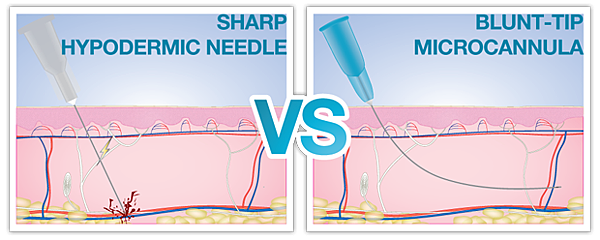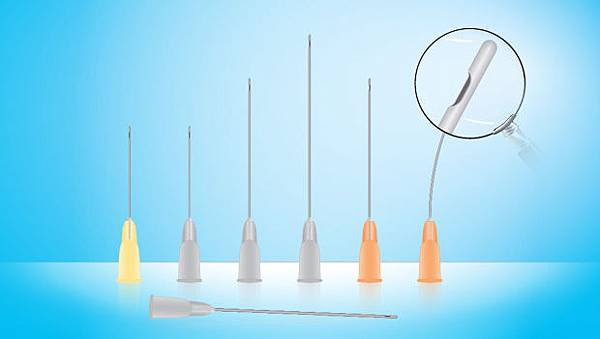






Filler injections with the blunt-tip microcannula.
J Drugs Dermatol. 2012 Sep;11(9):1098-103.
Fulton J1, Caperton C, Weinkle S, Dewandre L.
Abstract
BACKGROUND:
Microcannulas with blunt tips for filler injections have recently been developed for use with dermal fillers. Their utility, ease of use, cosmetic outcomes, perceived pain, and satisfaction ratings amongst patients in terms of comfort and aesthetic outcomes when compared to sharp hypodermic needles has not previously been investigated.
OBJECTIVE:
To compare injections of filler with microcannulas versus hypodermic needles in terms of ease of use, amount of filler required to achieve desired aesthetic outcome, perceived pain by patient, adverse events such as bleeding and bruising and to demonstrate the advantages of single-port injection technique with the blunt-tip microcannula.
MATERIALS AND METHODS:
Ninety-five patients aged 30 to 76 years with a desire to augment facial, décolleté, and hand features were enrolled in the study. Subjects were recruited in a consecutive manner from patients interested in receiving dermal filler augmentation. Each site was cleaned with alcohol before injection. Anesthesia was obtained with a topical anesthesia peel off mask of Lidocaine/Tetracaine. Cross-linked hyaluronic acid (20 mg to 28 mg per mL) was injected into the Mid-dermis. The microcannula or a hypodermic needle was inserted the entire length of the fold, depression or lip and the filler was injected in a linear retrograde fashion. The volume injected was variable, depending on the depth and the extent of the defect. The injecting physician assessed the ease of injection. Subjects used the Visual Analog Scale (0-10) for pain assessment. Clinical efficacy was assessed by the patients and the investigators immediately after injection, and at one and six months after injection using the Global Aesthetic Improvement Scale (GAIS) and digital photography.
RESULTS:
Overall, the Global Aesthetic Improvements Scale (GAIS) results were excellent (55%), moderate (35%), and somewhat improved (10%) one month after the procedure, decreasing to 23%, 44%, and 33%, respectively, at the six month evaluation. There was no significant differences in the GAIS score between the microcannula and the hypodermic needle. However, the Visual Analog Scale for pain assessment during the injections was quite different. The pain was described as 3 (mild) for injections with the Microcannula, increasing to 6 (moderate) for injections with the hypodermic Needle. Bruising and ecchymosis was more marked following use of the hypodermic needle.
CONCLUSION
Using the blunt-tip microcannula as an alternative to the hypodermic needles has simplified filler injections and produced less bruising, echymosis, and pain with faster recovery.



 留言列表
留言列表
